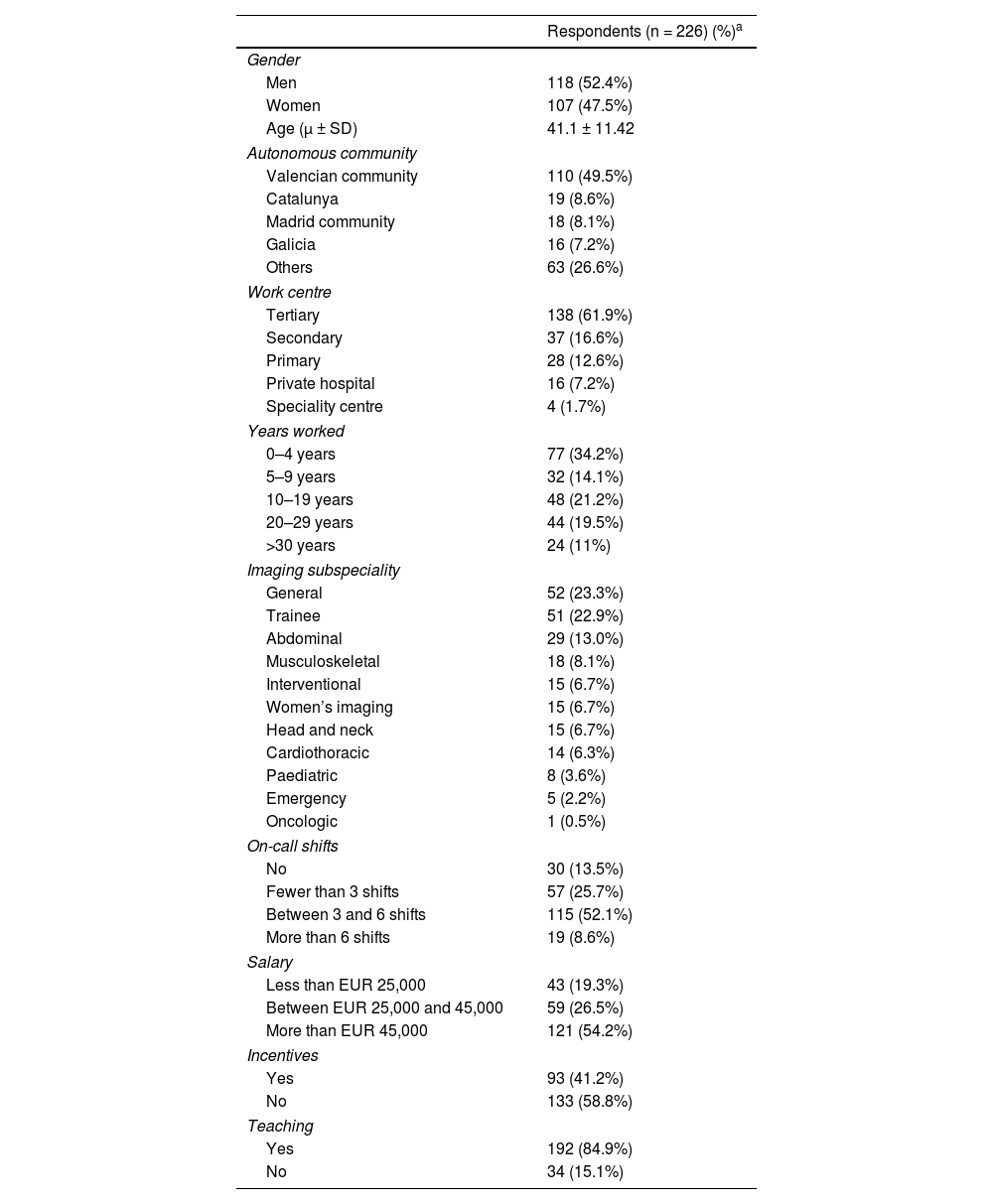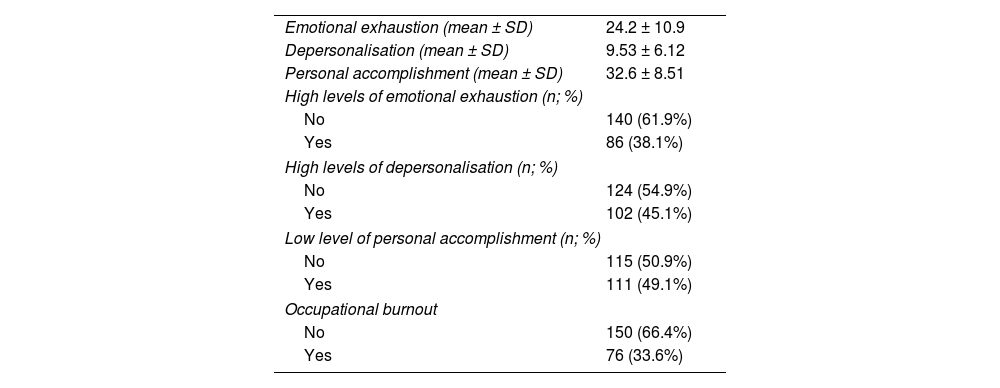The primary objective was to analyze the prevalence and degree of professional burnout in radiologists in Spain. Secondary objectives were to identify possible factors that increase or decrease the risk of burnout to enable preventive and corrective measures, decrease the stress associated with this condition, and thereby increase radiologists’ performance and satisfaction at work.
Material and methodsThis cross-sectional observational study used a voluntary, anonymous online survey of attending radiologists and residents through Google Forms®. The survey was structured into three sections: a qualitative assessment of the degree of professional burnout with the Maslach Burnout Inventory Human Services Survey (MBI-HSS), a series of sociodemographic and work-related questions, and a final section centered on possible causes of stress and improvements to the working environment.
The results of the survey were analyzed statistically to determine which variables were associated with burnout syndrome as well as to identify possible risk factors and protective factors.
ResultsAfter disseminating the survey through social networks and email contacts, we received a total of 226 responses (175 from attending radiologists and 51 from residents; 52% men; mean age, 41 ± 11 years; age range, 25–68). The prevalence of the syndrome was 33%, without significant differences between attending radiologists and residents. No risk factors associated with burnout were identified. Teaching in the workplace was the only protective factor.
ConclusionsOne-third of the respondents had burnout syndrome. Because the consequences of this syndrome can affect professionals’ personal life and their ability to do their jobs, early detection and intervention should be prioritized.
Analizar la prevalencia y grado del síndrome de desgaste profesional entre radiólogos en España. Como objetivos secundarios se pretende identificar sus posibles factores desencadenantes y atenuantes para implementar intervenciones preventivas y correctivas, disminuyendo el estrés asociado y aumentando el rendimiento y la satisfacción laboral de los radiólogos.
Material y métodosEstudio transversal y observacional realizado mediante una encuesta en línea, anónima y voluntaria, desarrollada a través de formularios de Google® y dirigida a radiólogos especialistas y en formación. La encuesta se estructura en tres apartados: una valoración cualitativa del grado del síndrome de desgaste profesional a través del Maslach Burnout Inventory Human Services Survey (MBI-HSS), el segundo constituido por una serie de preguntas sociodemográficas y laborales, y el último apartado centrado en las posibles causas de estrés y de mejora en el entorno laboral.
Los resultados de la encuesta se analizaron estadísticamente para determinar la asociación entre las variables y el síndrome, así como para determinar posibles factores de riesgo y protectores.
ResultadosTras difundir la encuesta en redes sociales y correo electrónico se recibieron un total de 226 respuestas (175 de especialistas y 51 de residentes). La media de edad fue 41 años (desviación estándar de 11 años, rango de 25 a 68), sin predominancia de género (52% hombres). La prevalencia del síndrome fue del 33%, sin diferencias significativas entre adjuntos y residentes. No se han identificado factores de riesgo que se asocien con el desgaste profesional. Tener docencia en el lugar de trabajo fue el único factor de protección.
ConclusionesUn tercio de los radiólogos que han contestado padecen síndrome de desgaste profesional. Dado que las consecuencias de este síndrome pueden afectar al entorno personal y al desempeño laboral del profesional, debería priorizarse su identificación temprana e implementarse una intervención adecuada.











